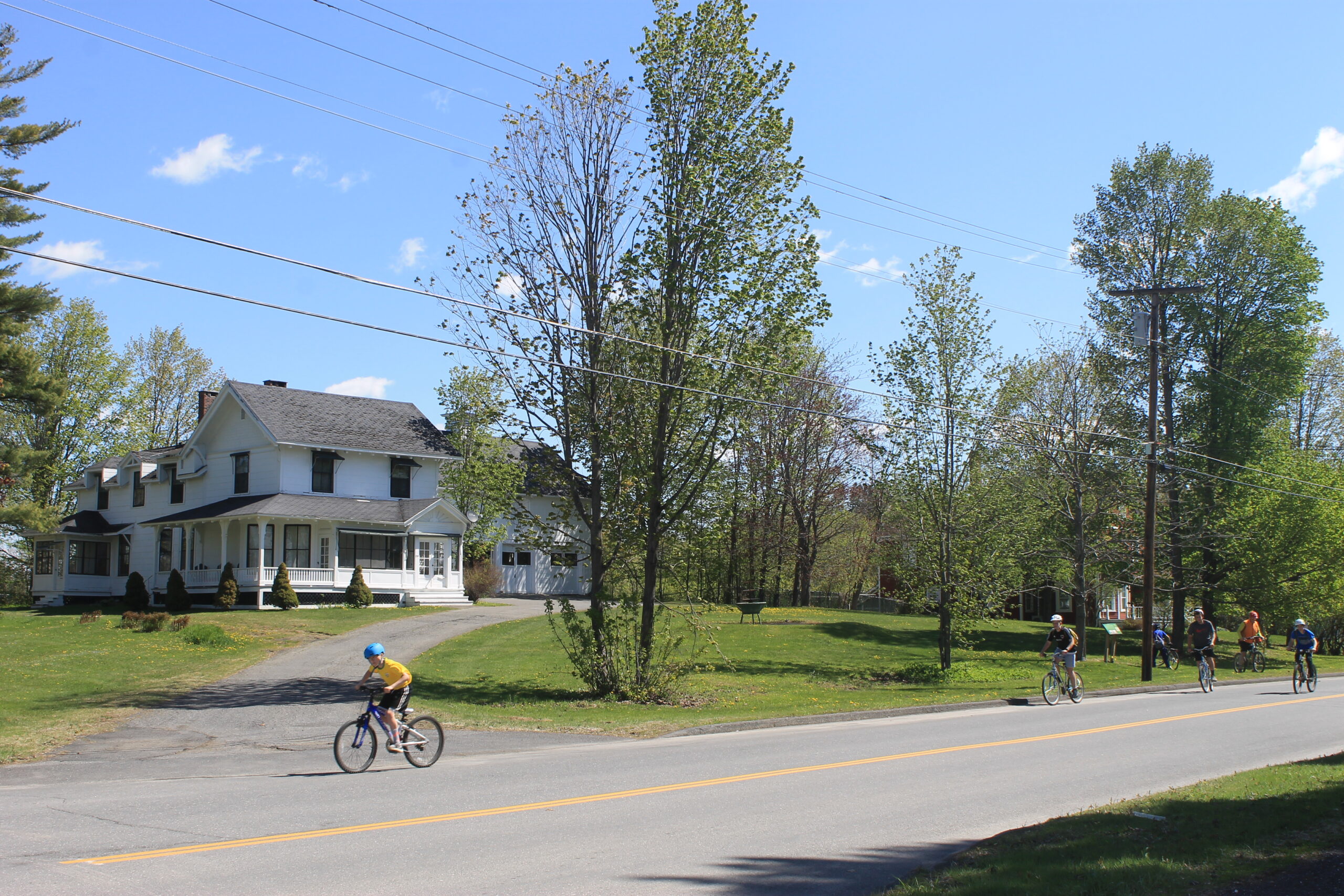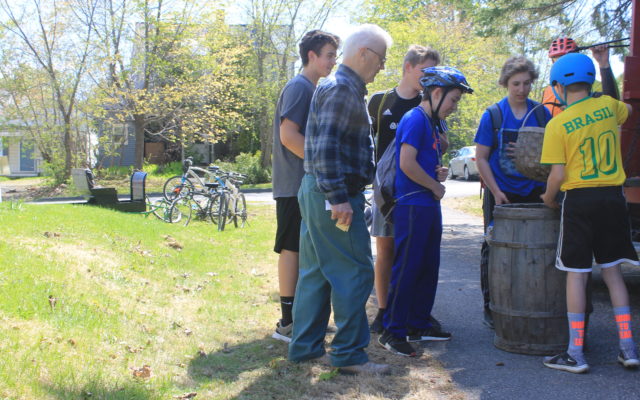
PRESQUE ISLE, Maine — On a comfortably sunny, windy May day, Presque Isle Middle School eighth graders took a field trip Monday biking around Presque Isle to learn about local history.
As part of what is now an annual spring field trip, eighth graders in Bill Guerrette’s social studies class rode bicycles from Skyway Middle School to downtown Presque Isle and then through the city’s residential core via the bike and pedestrian trail.
Once downtown, the students split into groups, each with a chaperone, and biked to a range of historic places, including the Vera Estey House and Glidden House, where they read historic markers, tried out old equipment and met with local history guides.
“It’s pretty nice, I like it,” said eighth-grader Caleb Cray. “The wind is perfect.”
Following a guide of destinations, the students learned about the people and history behind Presque Isle. Back in class the next day, they are tested on the history tour.
At the Vera Estey House, built in 1875, Presque Isle Historical Society board director Richard Rand showed a group of eighth grade boys a circa 1950s potato harvesting truck, barrel and loader.
That type of equipment was used for decades and is still remembered well by baby boomers and other generations who grew up working the harvests each fall, Rand said.
“That’s why people like Mr. Hendrickson and I are so rugged today,” Rand told the students, referring to Eric Hendrickson, a retired high school science teacher who was leading one bike group. “We rolled a lot of barrels.”
Guerrette, who has taught social studies for more than three decades, said the history by bike activity evolved out of a collaboration with the middle school’s physical education program, which had acquired its own set of youth bikes.
For middle schoolers, being outside and exploring local historical places doesn’t feel like learning “history” in the tradition classroom sense, Guerrette said.
“It’s one thing to go over things in class,” said Guerrette. “It’s another to go out and experience it. Now they have a better awareness of their hometown.”
- Richard Rand, left, watches Presque Isle Middle School eighth grader Caleb Cray, right, trying out circa 1950s potato harvesting equipment at the Vera Estey House during a local history bike tour. Looking on, from left, are students Matt Hedrich, Jonah Roy, Logan Akeley and Ethan Shaw. (Anthony Brino)








